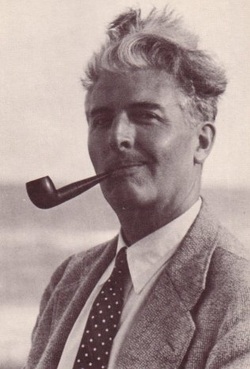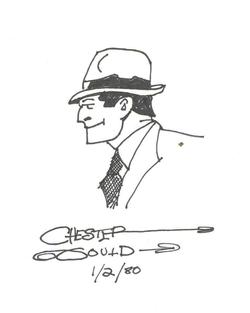 H. T. Webster
Harold Tucker Webster (September 21, 1885 – September 22, 1952) was an American cartoonist known for The Timid Soul, Bridge, Life’s Darkest Moments and others in his syndicated series which ran from the 1920s into the 1950s. Because he disliked his given name, his readers knew him as H. T. Webster, and his signature was simply Webster. His friends, however, called him Webby.
Because of the humor and human interest in his cartoons, he was sometimes compared to Mark Twain, and his art style was quite similar to the work of Clare Briggs. During his lifetime, Webster drew more than 16,000 single-panel cartoons.
Born in Parkersburg, West Virginia in 1885, Webster grew up in the small town of Tomahawk, Wisconsin where his father was a druggist. He began drawing at age seven. When he was 12, he switched from cigarettes to cigars, and that same year he sold his first cartoon for $5 to the magazine Recreation.
He studied drawing from a correspondence course when he was 15, and two years later, he left high school and Tomahawk to study in Chicago at the Frank Holmes School of Illustration, where cartoonist Harry Hershfield had also studied. However, the Holmes School closed only a few weeks after Webster’s arrival, bringing an end to his formal art training. With little success as a freelance artist, Webster began a salaried job with the Denver Republican, moving to the rival Denver Post when he was offered $15 a week as a sports cartoonist. Webster commented, “If they had known it, they could have got me for $1.50″.
In 1927 Webster trained himself to draw left-handed in three months after a severe case of arthritis impaired the use of his right hand. In 1931, the World folded, and that same year, Simon & Schuster published a collection of The Timid Soul reprints. Webster then went back to the New York Herald Tribune, where he then launched a Timid Soul Sunday strip. He alternated his various features throughout the week: Caspar Milquetoast was seen on both Sunday and Monday. Youth’s glories (The Thrill That Comes Once in a Lifetime) and the downside (Life’s Darkest Moment) appeared on Saturdays and Tuesdays. On Wednesday, The Unseen Audience offered satirical jabs at radio. How to Torture Your Husband (or Wife) was published each Thursday, and the week ended with Bridge on Fridays.
During the 1940s, Webster lived at Shippan Point in Stamford, Connecticut. His assistant, Herb Roth, took over when Webster died in 1952. When Roth died the following year, the series came to an end with the last new drawing appearing in the New York Herald Tribune on April 4, 1953.
(wikipedia.org)
Life's Darkness Moment Timid Soul
Gaar Williams, the “Hoosier Cartoonist,” was born in Richmond Indiana on 12 Dec 1880. Williams graduated from Earlham College and studied art in Chicago and Cincinnati. His first newspaper job was at the Chicago Daily News in 1904. He worked for the Indianapolis News for 12 years then moved on to 14 years labor on the art department of the Chicago Tribune.
His widely syndicated single panel slice-of-life cartoons, celebrating the days of his youth, appeared under the captions “How to Keep From Growing Old,” “Wotta Life, Wotta Life,” “Static,” “Our Secret Ambition,” “A Strain on the Family Tie,” and “Among the Folks in History.” Another panel featured a small dog called “Nipper.”
Williams gentle cartoons recalled his Hoosier boyhood for the new generation. In a book collection of “Among the Folks in History” (Book and Print Guild, Winnetka, Illinois) he recalled the asafetida bag, a dreadful winter torture for boys of his generation (Penrod Schofield suffered from this medical horror as well).
“I never knew what they were for,” wrote the cartoonist, “or who thought up the idea, but if you ever had to wear an asafetida bag you’ll never forget it. It was tied around your neck with a piece of string and there she stayed -- right under your chin and nose. After a time you sort of got used to it and you’d forget to be bothered. Going in swimming didn’t seem to hurt it -- maybe it stunk a little louder while it was wet -- I don’t remember. In a close room with three or four boys all wearing a bag of asafetida a non-member of the union might have noticed it. I don’t know, I was always a member it seems to me.”
Williams spent his winters in Florida and was an avid fisherman. The Fort Myers chamber of commerce awarded him the Thomas A. Edison medal for landing a 112 pound tarpon. On Saturday 15 June 1935 Williams, who had been in ill health several years, suffered a cerebral hemorrhage while sitting with his wife and a friend in an automobile on Chicago’s “Loop.” He died several hours later at a Chicago hospital. O. O. McIntyre wrote in his column New York Day by Day: “Zim gone. Billy Ireland gone. Gaar Williams gone. Will Rogers gone. When the world is so desperately in need of laughs!”
(john-adcock.blogspot.com)
 Chester Gould
(20 November 1900 - 11 May 1985, USA)
was born in Pawnee, Oklahoma. His father didn't support his artistic ambitions, and sent him to law school. While studying however, Gould started his career drawing sport cartoons for the City Daily Oklahomian between 1921 and 1923. For the Hearst papers, he did 'The Radio Lanes' and later 'Fillum Fables', which replaced Edgar Wheelan's 'Minute Movies'
In 1931, Chester Gould's career got a boost when he sold his comic strip idea about the hard-nosed plain-clothes detective Dick Tracy to the Chicago Tribune and the New York Daily News. After 1931, he devoted his life to writing and drawing the daily 'Dick Tracy' comic. Between 1956 and 1964, the 'Dick Tracy' strip was accompanied by the funny animal topper, 'The Gravies'.
Gould's 'Dick Tracy' comic was unique for it's clever mix of suspense, grotesque villains, explicit violence, melodrama and well-documented use of scientific research methods, that were relatively new at the time. Gould also introduced innovative anti-criminal aids for policemen in his stories, such as security cameras, handheld video cameras, and most notably the two-way wrist video camera, which was developed at that moment by Gould's friend Al Gross.
Gould's work has inspired a lot of other cartoonists, like Milton Caniff and Alex Raymond. He also received the Reuben award, one of the most important awards in the comics drawing field. Gould retired in 1977, and Rick Fletcher and Alan Collins took over 'Dick Tracy'. In 1981, Gould wanted his name removed from the 'Dick Tracy' motion picture credits because he was dissatisfied with the direction the movie had taken.
(lambiek.net)
Paul S. Newman
(April 29, 1924 – May 30, 1999)
was an American writer of comic books, comic strips, and books, whose career spanned the 1940s to the 1990s. Credited in the Guinness Book of World Records as the most prolific comic-book writer, with more than 4,100 published stories totaling approximately 36,000 pages, he is otherwise best known for scripting the comic-book series Turok for 26 years.
(wikipedia.org)
|


 RSS Feed
RSS Feed


